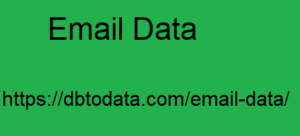|
|
In this model, businesses provide things that other businesses, customers, need. What is the B2B business model? B2B includes e-commerce and some high-value face-to-face transactions that require physical meetings. Today, the B2B model is even more developed as businesses promote business through commercial websites . The B2B model has two basic characteristics . One is that every business has its own purchasing process, two is that B2B needs to focus on logical factors. Customers in the B2B model are businesses that focus on logic instead of emotions. Understanding what the B2B business model is, you will see that this form helps save time, money, increase efficiency and opportunities for cooperation between businesses.
Not only that, B2B focuses on collective benefits and emphasizes logic more. B2B Email Data business form will be different from other business forms such as B2C, B2G, specifically, B2B (Business To Business) - business-to-business transactions. While: B2C (Business to Consumer) – transactions between businesses and final individual consumers. B2G (Business to Government) – transactions between businesses and state agencies, governments and public organizations (schools, hospitals...). Benefits of the B2B business model Each enterprise in the economy is a small link in the entire economic system. Therefore, doing business in the B2B model creates connections , exchanges and brings great benefits to businesses, such as: Benefits of B2B business Benefits of B2B business Expand cooperation opportunities with many other businesses.

This model helps businesses increase reliability, reputation, and reputation that will quickly spread in the market, improving business efficiency. Save time, paperwork, and management costs with a separate purchasing process. Eliminate subjective emotional factors because customers in the B2B business model are businesses, therefore, bring collective benefits and have a higher logical element. Break down the space and time gaps between buyers and sellers, increasing flexibility in production activities Effective tool to analyze consumer needs and behavior from which to develop reasonable business development strategies.
|
|